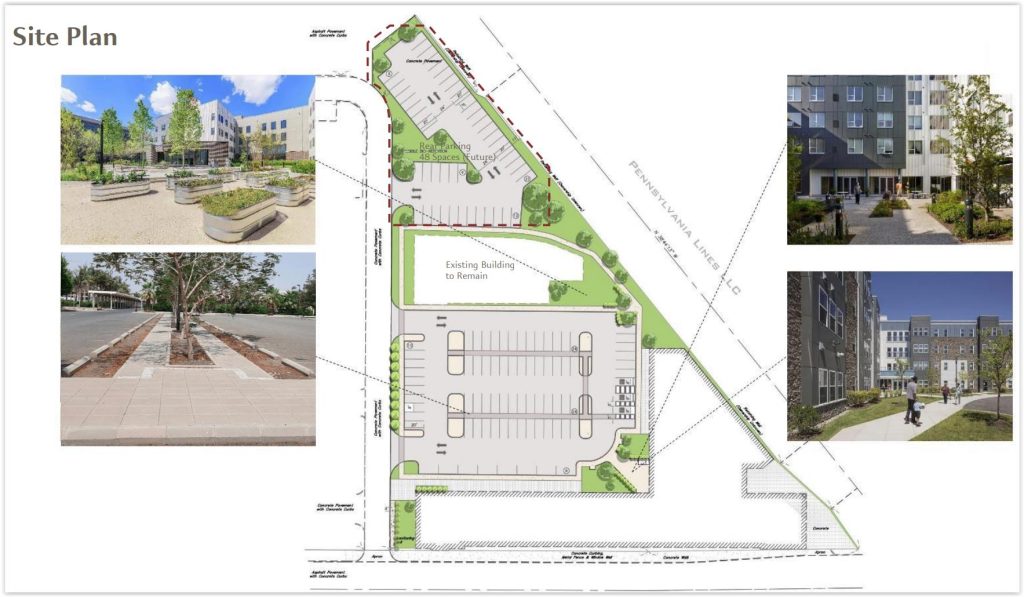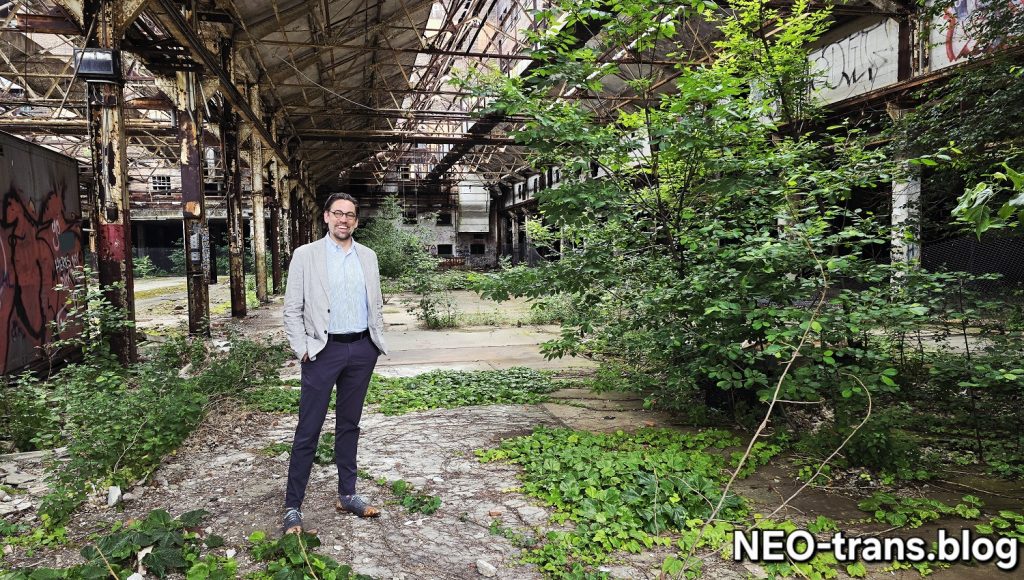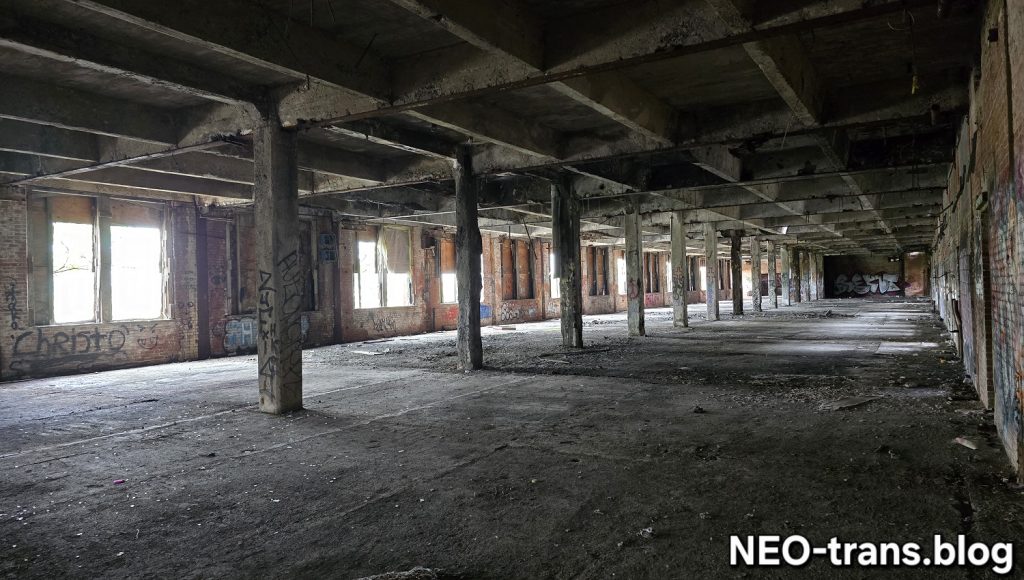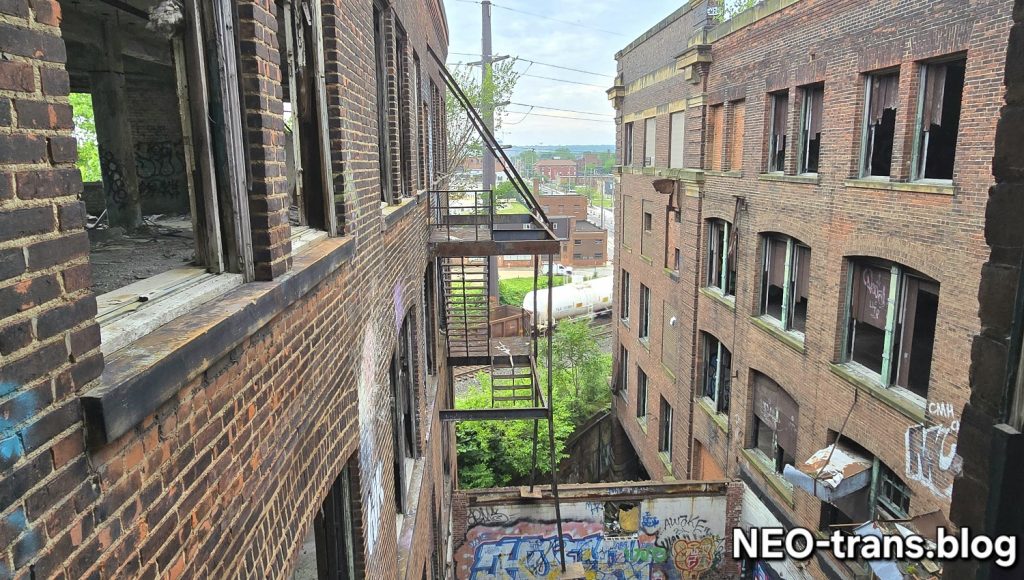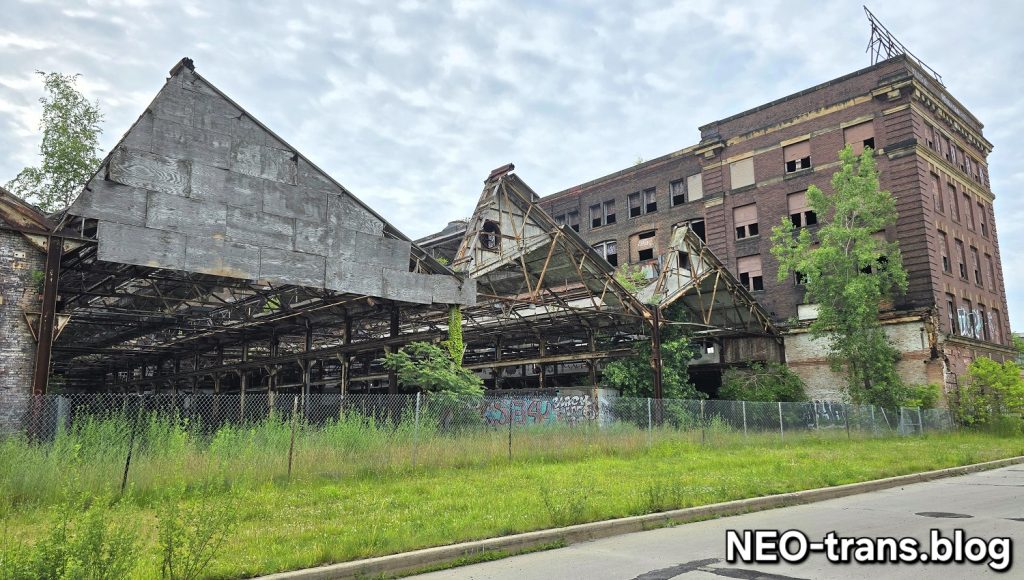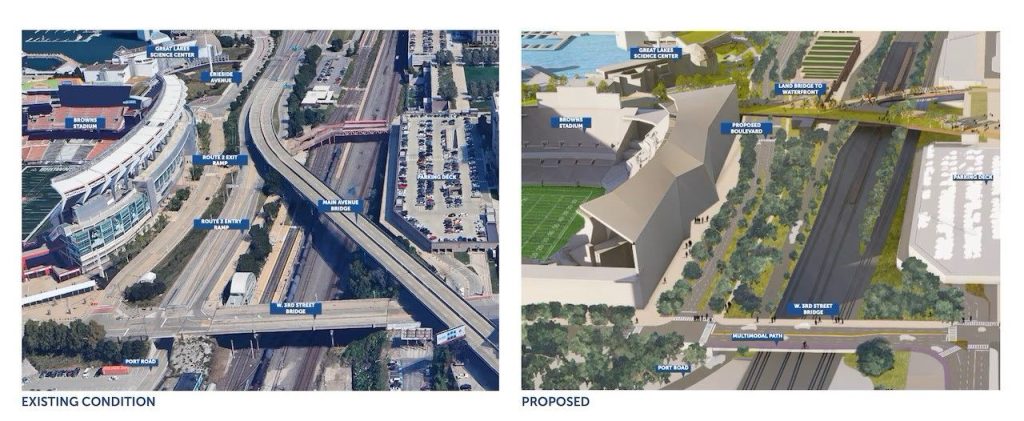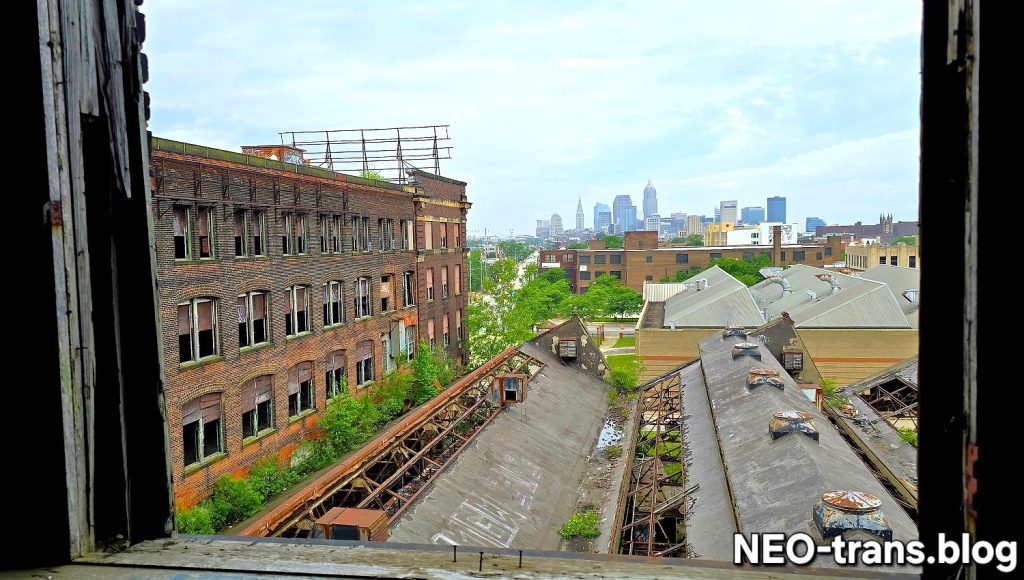
Someday, this perspective of Downtown Cleveland could be the view from someone’s home. But for the last 40 years, Mother Nature has been steadily reclaiming this property from its prior use, the Warner & Swasey Co.’s machine tool factory on Carnegie Avenue near East 55th Street. That decay can end and the building be restored if just $2 million more can be found to close a financing gap (NEOtrans). CLICK IMAGES TO ENLARGE THEM.
Pennrose to acquire W&S site next week
Perhaps as early as Monday, affordable housing developer Pennrose LLC will get a deed and the keys to the hulking mass of brick. concrete, steel and memories that is the Warner & Swasey Co. factory, 5701 Carnegie Ave. The hope since 2018 has been to turn this long-vacant site into affordable housing. But if money was as abundant as hope for this property, its redevelopment wouldn’t have experienced a new, $2 million setback.
Pennrose and its project co-developer Midtown Cleveland Inc., a nonprofit community development corporation, are seeking to renovate and repurpose the 140-year-old Warner & Swasey machine tool factory into 112 apartments in a $56.7 million first phase. Other parts of the decayed, city-owned site, set to be repurposed for workforce apartments and ground-floor commercial in future phases, could at least get stabilized in the near term.
But Philadelphia-based Pennrose and Midtown Cleveland recently learned that $2 million of Congressionally directed federal funds for the project aren’t going to happen. And a backup federal funding source, the U.S. Environmental Protection Agency’s Greenhouse Gas Reduction Fund, was frozen by the Trump Administration. It is now the subject of a pending lawsuit.
Warner & Swasey’s shortfall is actually $7 million. But Pennrose and Midtown representatives said they have a possible solution for $5 million of that — a pending renewal and expansion of the Ohio Opportunity Zone tax credit program. Still, a developer can’t close its project financing with a tax credit, which is a trailing source of funds. So it has to have a bridge loan to that source which is competitively awarded and not guaranteed.
If those loose ends aren’t tied up by Dec. 15, which is when the rest of Warner & Swasey’s financing is due to close, it could risk some time-limited funding pieces, said Pennrose’s Director of Development Geoff Milz during a tour Tuesday of the factory that has sat empty since 1985.
“As a testament to how many people care about this building, (there are) over 20 sources of financing in this deal right now and we need one more,” Milz said in thanking those at the city, county and state that are supporting the project. “But we’re deep into hero territory right now. Whoever comes through with that last $2 million is the one who carries the football across the goal line.”
He and Midtown Cleveland Executive Director Ashley Shaw said they’ve gone back over every source of funding they can think of, including governmental and philanthropic sources, in the hopes of raising that elusive $2 million. They’ve also worked to cut costs on the project and at Midtown, including hiring a new janitorial firm at their properties to save some money.
“We’ve left no stone unturned but we’re turning them over again,” Shaw said. “We’ve done a lot of scrubbing to get expenses down. We’re in negotiations with tax credit investors and there’s still some conversations we’re having with our partners. This is the closest we’ve ever been to closing the financing. It’s a critical time for us.”
Next week, Pennrose is due to take title to the 3-acre property and its 215,000 square feet of structures. Over the next three months or so, it will use $1,465,052 in Ohio Brownfield Remediation Program funding to demolish structures totaling about 35,000 square feet. The project’s general contractor is John G. Johnson Construction Co. of Cleveland and the architect is Moody Nolan Inc. of Columbus.
To be demolished is “the shed” machine shop whose structural steel is too badly deteriorated to save, Milz said. Some of its structural steel was coated with cindercrete that has since come off and exposed the steel to the elements for many years. A two-story, brick building at the north end of the site will remain but for a future, undetermined use.
The remaining 160,000 square feet of buildings — dubbed the Carnegie Building and the Wedge Building — will be cleaned up and remediated. Both are five-story structures but only the Carnegie Building, along its namesake street, has most of its funding to be reactivated. Floors two and three of the Carnegie Building will have 56 units of affordable senior housing and floors four and five will have 56 units of family housing.
The east half of the Carnegie Building’s ground floor will be for resident amenities — a fitness center, community room and leasing/management office. A ground-floor commercial space at the west half of the first floor will have to wait for a second phase. It will be structurally repaired and white-boxed so it is ready for a future commercial tenant to complete its build-out.
Also put on the future to-do list is the Wedge Building, a connected five-story building next to the elevated Norfolk Southern railroad tracks. It, too, will be repaired and white-boxed, then sealed off from the Carnegie Building and outside entry to protect it from Mother Nanture and vandals. It is envisioned for use as workforce apartments.
“The building is a tank,” Milz said. “It was built to last. Even though it’s been exposed to the elements for many years, it’s still salvageable.”
Shaw said Warner & Swasey is envisioned by Midtown Cleveland as the southern anchor to Penn Square, a planned central gathering area and redevelopment district along East 55th Street that has the 22-story Wilson Tower Apartments as the northern anchor. The goal is to foster a vibrant urban setting like Market Square, Gordon Square or what Penn Square was before urban decay set in after the 1950s.
“This is our future retail area and gathering space,” Shaw said. “Warner and Swasey really makes what happens with Penn Square go. You need Warner and Swasey as the anchor on the south end. The fact that it is still standing there signals hope. I’ve never seen a building that people are so connected to in Cleveland, outside of the West Side Market.”
At its peak during World War Two, when the plant made parts for planes, ships and tanks, employment topped 7,000. Most of the time, Warner & Swasey made turret lathes and other precision instruments, including telescopes.
The company’s founders Ambrose Swasey and especially Worcester Warner were interested in astronomy, hence their manufacture of telescopes. But Warner & Swasey was acquired, sold and acquired again by other companies in the 1980s, resulting in the closure of several of its Cleveland-area plants including the Midtown site. Its last plant, in Solon, shut in 1992.
Shaw noted there’s a Warner & Swasey Facebook group whose members, comprised of former workers and their family members, meet monthly for lunch. Milz said he’s spoken with people who want to see the building restored because their parent worked here and they visited the factory and its Carnegie office building when they were kids.
“And every Saturday morning for like 10 years they came with dad, sat in the office and looked out — it means something,” Milz said. “It’s not just a hunk of bricks but a pretty powerful landmark for this area. It’s an underdog. People love cheering for an underdog. I feel like this project has been underdog for a long time.”
END

